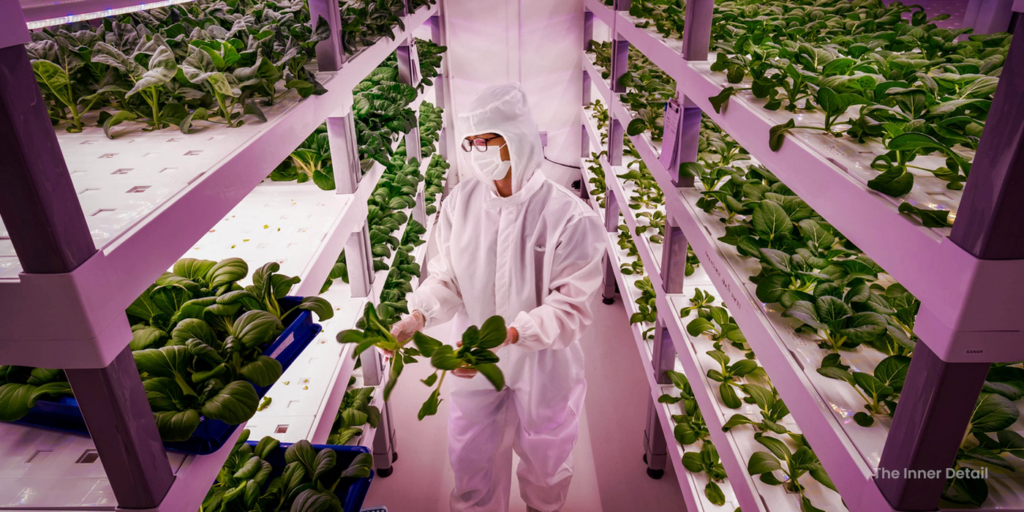China has constructed a 20-storey building of vertical farming, where artificial intelligence technology is used to cultivate crops – world’s first of the kind.
Likely as the shift from non-renewable to renewable, there is another shift been explored in today’s world which is horizontal to vertical. Growth and development led to rapid urbanization with conversion of cultivable lands into building, industries and skyscrapers. As this is inevitable in the current technology-oriented era, scientists and agriculturists are moving towards vertical farming.
Vertical farming is nothing but the practice of growing crops in vertically stacked layers. It is considered a promising and innovative approach to address the issue where land is limited for cultivation of plants, say urban cities. Vertical farming produces more food per square meter compared to traditional horizontal farming, as it is stacked. However, enough sunlight and water for plants have always been an issue.
While many countries have already started deploying this farming method, China has augmented vertical farming by exploiting technology like AI. The new farm uses AI to address the insufficient sunlight and water concern for plants in vertical farming.
China’s AI-powered Vertical Farm
Brought into play by Institute of Urban Agriculture under the Chinese Academy of Agricultural Sciences (CAAS), the vertical farm deploys robots and AI for plantation and harvesting, making it fully unmanned. Researchers of the team claims that the robots can grow and harvest a crop of lettuce in just 35 days, which would take probably 6-8 weeks (42-56 days) in traditional horizontal farming.
Artificial Intelligence-based control systems are the major reasons for achieving this. The AI control system monitors and puts forth the algorithm to analyze and supplement the plantation crops with the required environmental ingredients like sunlight, water, and nutrients.
The farm utilizes advanced plant light formulas to improve light efficiency, so that plants get adequate level of light. The plants are grown under hundreds of different colored LED lights, where combination of lights can be adjusted using a smartphone.
You might be interested to read this: Indian man builds a Hydroponic farm in his 2-storey building, earns ₹70 Lakhs/year.
“We can combine different amounts of red, blue, yellow, near-ultraviolet and near-infrared lights during different stages of the plant’s lifecycle,” said Wang Sen, a researcher at the IUA.
“We have built a database of 1,300 combinations for 72 types of crops.”
Vertical farm speaks for Efficiency
Contrast to traditional horizontal farming, vertical farming in an indoor construct can produce vegetables at a faster pace, making them ideal for urban areas, wastelands and deserts.
The researchers were able to harvest over 10 crops of vegetables every year. Indeed, there were no significant difference between lab-grown plants and traditionally grown plants, initial research results show. “It’s way more efficient,” says Li Zonggeng, assistant researcher at the IUA.
The vertical farming can also act as a breeding accelerator, shortening the breed time of wheat, cotton and soybean plants by at least 50%, the researchers said. IUA officials are currently in talks with listed companies like Foshan NationStar Optoelectronics to commercialize their vertical farm.
(For more such interesting informational, technology and innovation stuffs, keep reading The Inner Detail).
Kindly add ‘The Inner Detail’ to your Google News Feed by following us!

